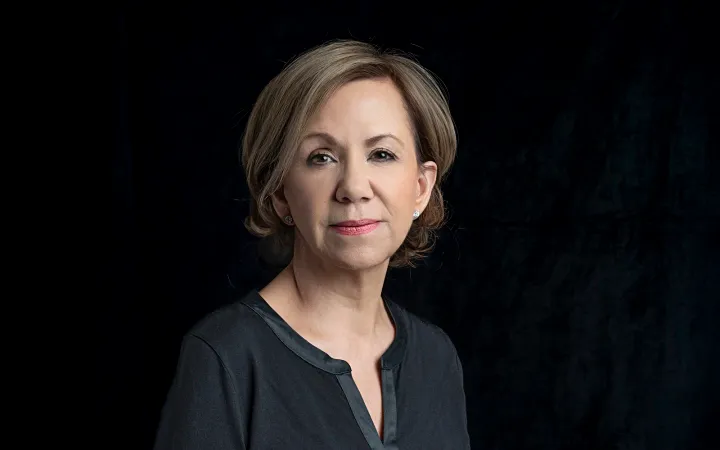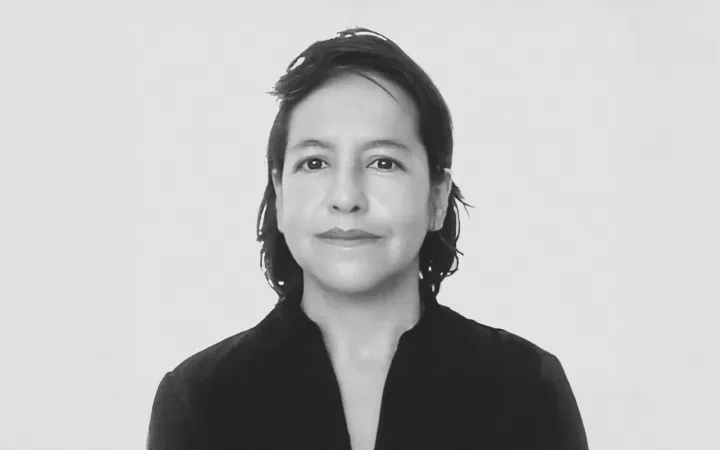Por Yuriria Rodríguez Castro

¿Cuál es la diferencia entre mafia y gobierno?, pregunta El Pingüino a sus mafiosos y él mismo responde: “Que uno de los dos sí está organizado”
(Diálogo de la serie “El Pingüino”)
En plena cumbre del G-20, la presidenta mexicana, Claudia Sheinbaum fue a tratar como tema primordial —pese a que hay temas de agenda más apremiantes—, que se aclare la detención del líder del Cartel de Sinaloa, Ismael Zambada (“El Mayo”), todo esto en su última oportunidad para solicitárselo a Joe Biden, porque después tendrá que tratar el asunto con su homólogo, Donald Trump, quien tiene dentro de su agenda de seguridad, aplicar la penas y cargos legales de terrorismo en contra de los narcotraficantes mexicanos, mientras en todo el mundo seguimos preguntándonos qué es el fentanilo, incluso los adictos no saben lo que consumen, en gran medida porque esta generación podría ser más descuidada e ignorante en sus consumos, donde la droga es otro producto. ¿Pero cuándo comenzó a hablarse de fentanilo en México?
No lleva más de seis años, justamente después de un decomiso que pasó casi inadvertido para las autoridades y la prensa mexicana. Fue en 2018 cuando se dio a conocer el aseguramiento de un laboratorio clandestino de pastillas de fentanilo fabricadas como falsas tabletas de Oxicodona, de color azul, con el rótulo de M-30, en la alcaldía de Azcapotzalco.
Esta información es pública, aparece en un libro del periodista Ben Westhoff, publicado un año después de este operativo: “El alcance de la operación se apreció en diciembre de 2018, en una redada en Ciudad de México, que sacó a la luz una operación de fentanilo en el interior de un edificio del gobierno municipal de Azcapotzalco, supuestamente dirigida por el Cártel de Sinaloa”. Nótese que el periodista estadunidense indica que las instalaciones de este laboratorio tenían lugar en un edificio de gobierno de dicha alcaldía, pero no precisa la información.
El decomiso en esta demarcación es tan relevante que los pocos periodistas que han tratado el tema en distintas partes del mundo, lo han señalado como fundamental para descubrir la amplia red de tráfico de fentanilo que involucra a China y México, tal como lo advierte el español Víctor Méndez Sanguos en el año 2020: “en la zona de Azcapotzalco (Ciudad de México), la policía del país practicó otras cuatro detenciones que, además, incluyeron la incautación de gran cantidad de pastillas de opioides sintéticos con el fentanilo como compuesto principal. En este hallazgo también se localizaron sustancias para la elaboración de las dosis e incluso una máquina industrial para su producción en masa. Tenían el logo de M-30”.
Según el diario El Universal, el decomiso tuvo lugar en la colonia San Álvaro en dicha alcaldía capitalina donde además se incautaron cartuchos útiles, pero la nota aparecida en diciembre de ese año no dice más de lo que informó en su comunicado el gobierno federal.
Dos meses antes en Mexicali se había detenido a un médico ex militar de origen búlgaro, quien en un pequeño cuarto había adaptado un laboratorio de fentanilo donde tenía 20 mil pastillas de “calidad triple AAA” con el rótulo M-30, las cuales serían enviadas a Boston, Chicago y New Jersey. Se trataba de Anton Petrov Kulkin, quien —según información policial— presumió ser el mejor “cocinero” de droga de toda Latinoamérica, además cuando se le detuvo en el fraccionamiento de la colonia San Marcos, también le fue confiscada una máquina para fabricación de tabletas, considerada “única en su tipo”, pero que luego se encontraría otra igual en Azcapotzalco.
A lo largo de la aún corta pero muy política disputa por evitar responsabilidades conjuntas, la DEA organizó un operativo para infiltrar al Cártel de Sinaloa que duró más de un año, consistente en seguir a la organización criminal hasta China y de vuelta a México, para luego entrar en sus negocios de lavado de activos, todo con el propósito de demostrar al gobierno del entonces presidente López Obrador que había grupos criminales mexicanos en el negocio masivo de esta droga, mientras el mandatario mexicano se esforzaba por demostrar que no había producción de fentanilo en el territorio nacional y decidió enviar cordiales misivas al gobierno chino para exhortarlos a dejar de vender el precursor, a lo que las autoridades de ese país contestaron que según las leyes chinas, la venta del precursor es completamente legal y se adquiere incluso para la limpieza industrial.
En este artículo hablaremos del fentanilo y de cómo este es un opioide sintético, no un opiáceo, por lo que es necesario aclarar la diferencia: “originalmente un opiáceo era cualquier medicamento que contuviera opio, utilizado normalmente para aliviar el dolo o conciliar el sueño. Más recientemente ha pasado a designar cualquier droga natural extraída de la planta del opio (amapola). La heroína, la morfina y la codeína son las más conocidas. Un opioide es cualquier estupefaciente sintético con efectos psicológicos similares a los de la morfina. También se utiliza de forma más amplia para incluir cualquier droga de este tipo, ya sea natural o sintética. En este sentido todos los opiáceos son opioides, pero no todos los opioides son opiáceos”
El ingreso de fentanilo a México y su elaboración como opioide sintético, ha puesto fin a la era de los grandes decomisos de droga, en gran medida porque ya no resulta notorio incautar unos botes de pastillas azules que son imitación de tabletas de Oxicodona, Alprazolan o Xanax; o que aparecen como versiones de estos medicamentos controlados pero en el mercado negro, además, es casi imposible decomisar toneladas de fentanilo como sí pasaba con otras drogas sintéticas, ya que se pueden ocultar grandes dosis en tan sólo unas cuantas pastillas. Esto nos lleva a un mercado de drogas en las calles y en internet donde se pueden adquirir tabletas al mayoreo. Así es como el dealer del también llamado Blues o Mexican Blues, ya no es precisamente un narcomenudista y el adicto a esta sustancia desconoce la dosis que consume, por lo que se trata de un mercado a ciegas, basándose sólo en el supuesto de que el productor haya elaborado la tableta como una equivalencia de unidad por dosis.
El decomiso en Azcapotzalco es un misterio que pasó inadvertido y sólo notificó de cuatro detenciones puestas a disposición, de las cuales no se supo su identidad ni se informó sobre si fueron procesadas o liberadas. Pero luego, se dio a conocer que la incautación de fentanilo se venía realizando desde el 2016, algo que pretendía alejar de la responsabilidad al gobierno de López Obrador y al experimento narcótico encabezado por los hijos de Joaquín Guzmán Loera, especialmente cuando se había señalado a Ovidio Guzmán como quien decidió introducir masivamente esta droga en los Estados Unidos, coincidiendo el auge de consumo en el mismo año 2013 que es cuando los hijos del líder del llamado Cártel de Sinaloa toman el control del negocio.
Mucho se puede suponer de si Ismael Zambada estuvo a favor o en contra de este nuevo producto, o si terminó cediendo el apoyo logístico a cambio de una inmunidad pactada que tendría fin hasta su polémica entrega este año, lo cierto es que los primeros decomisos fueron al grupo de Sinaloa, según la información oficial que dio a conocer el propio gobierno mexicano.
El dilema autodestructor es un dilema de Estado: es preguntarse cómo un gobierno intenta —si es que verdaderamente lo hace— controlar la organización criminal creada por propia mano desde su sistema político, cómo buscaría reducir la violencia del crimen organizado sin auto eliminarse y sin confrontar su desorganización estatal, para finalmente, autodestruirse, porque el crimen quizá sea lo único que le proporcione organización.
Con las drogas, lo único que importa es el efecto, no si el productor y el consumidor tienen que usar una combinación química más potente a riesgo de que el adicto no pueda observar la composición del narcótico, provocando una sobredosis letal.
Si se piensa que el fentanilo es blanco, es decir muy poco, también la cocaína lo es, lo mismo que la heroína, aunque también se puede consumir al “cocinar” la goma de opio, algo que hace con frecuencia un adicto al hacer burbujear en la cuchara para ya sea, inyectarla o fumarla. La diferencia es que cuando el consumidor “cocina” un opiáceo de calidad, pasa del blanco al color marrón o de la goma de opio de color violáceo a un estado espeso, casi ocre. Pero cuando los mexicanos comenzaron a vender en EU una heroína que desde el polvo no cocinado se veía negra o café—conocida como heroína de alquitrán negro—, ya no se podía observar el cambio de estado que servía —por así decirlo— como una prueba de calidad del producto.
En una segunda entrega, explicaré mi esquema con base en conceptos Weberianos.
Las opiniones expresadas son responsabilidad de sus autoras y son absolutamente independientes a la postura y línea editorial de Opinión 51.






Comments ()